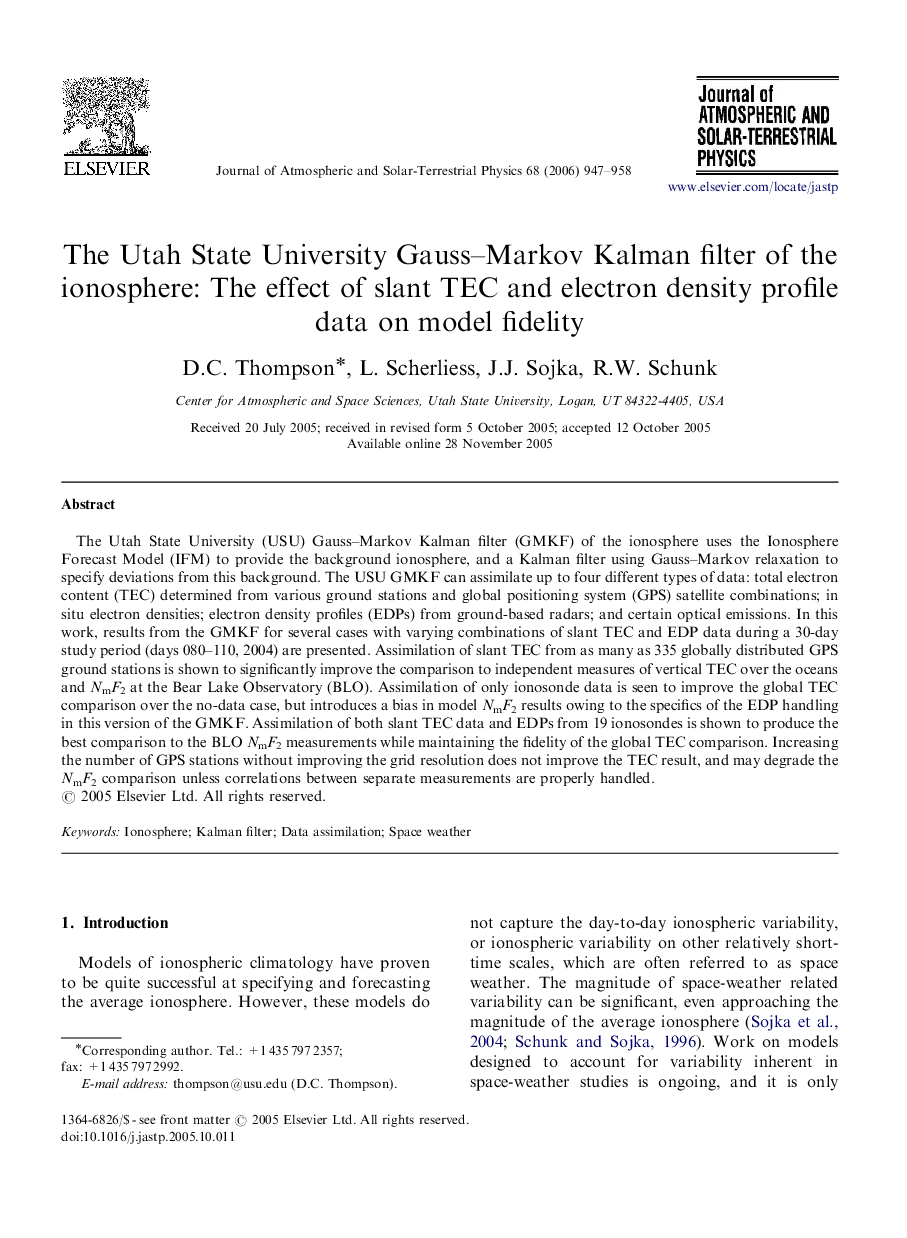| Article ID | Journal | Published Year | Pages | File Type |
|---|---|---|---|---|
| 1778427 | Journal of Atmospheric and Solar-Terrestrial Physics | 2006 | 12 Pages |
The Utah State University (USU) Gauss–Markov Kalman filter (GMKF) of the ionosphere uses the Ionosphere Forecast Model (IFM) to provide the background ionosphere, and a Kalman filter using Gauss–Markov relaxation to specify deviations from this background. The USU GMKF can assimilate up to four different types of data: total electron content (TEC) determined from various ground stations and global positioning system (GPS) satellite combinations; in situ electron densities; electron density profiles (EDPs) from ground-based radars; and certain optical emissions. In this work, results from the GMKF for several cases with varying combinations of slant TEC and EDP data during a 30-day study period (days 080–110, 2004) are presented. Assimilation of slant TEC from as many as 335 globally distributed GPS ground stations is shown to significantly improve the comparison to independent measures of vertical TEC over the oceans and NmF2 at the Bear Lake Observatory (BLO). Assimilation of only ionosonde data is seen to improve the global TEC comparison over the no-data case, but introduces a bias in model NmF2 results owing to the specifics of the EDP handling in this version of the GMKF. Assimilation of both slant TEC data and EDPs from 19 ionosondes is shown to produce the best comparison to the BLO NmF2 measurements while maintaining the fidelity of the global TEC comparison. Increasing the number of GPS stations without improving the grid resolution does not improve the TEC result, and may degrade the NmF2 comparison unless correlations between separate measurements are properly handled.
